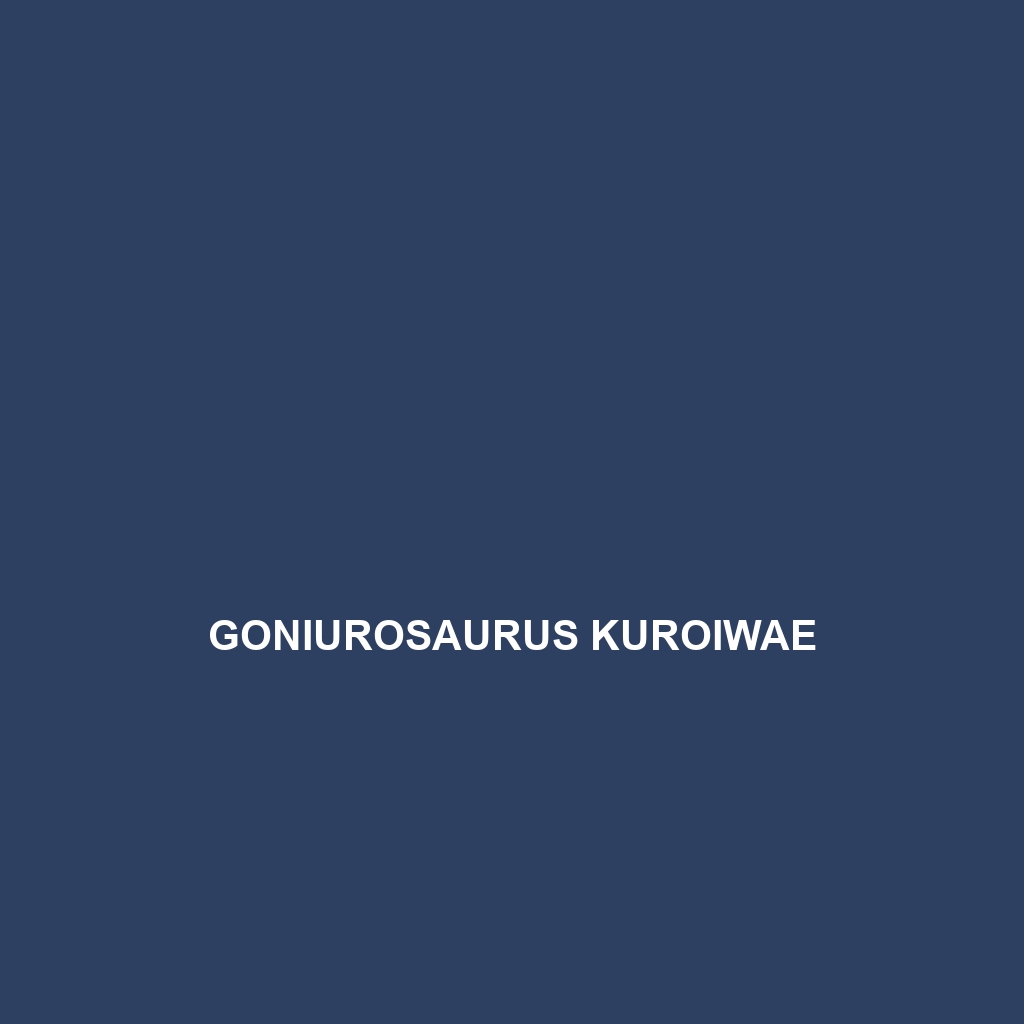Common Name
Goniurosaurus kuroiwae
Scientific Name
Goniurosaurus kuroiwae
Habitat
Goniurosaurus kuroiwae, commonly known as Kuroiwa’s Gecko, is primarily found in the subtropical and tropical forests of the Ryukyu Islands in Japan, particularly on the islands of Okinawa and Amami. This species thrives in a variety of habitats, including moist rainforests, temperate forests, and even rocky outcrops that provide ample cover and hunting grounds. The climate in these regions is characterized by high humidity and a mild temperature range, which is conducive to the survival of this unique lizard. These geckos prefer environments with abundant foliage and tree cover, allowing them to camouflage successfully from predators while they forage for food.
Physical Characteristics
Goniurosaurus kuroiwae exhibits several distinctive physical traits that set it apart from other gecko species. Typically, adults range from 15 to 25 cm in length, featuring a stout body and a well-formed tail. Their coloration is particularly striking, with shades of dark brown, grey, or black adorned with beautiful cream or yellow speckles, which aids in their camouflage against the forest floor and amongst tree bark. The skin is smooth and slightly glossy, contributing to their overall aesthetic appeal. Additionally, they possess large, expressive eyes that enhance their nocturnal vision, making them adept hunters during the twilight hours.
Behavior
Goniurosaurus kuroiwae displays a primarily nocturnal lifestyle, emerging from its hiding spots at dusk to seek food. These geckos are generally solitary creatures but may occasionally be seen basking together in a favorable spot. Their social interactions consist mainly of territorial displays, especially during the mating season, when males engage in visual and vocal displays to attract females and assert dominance. During the day, they take refuge in rocky crevices or dense vegetation, which helps protect them from predators and sunlight.
Diet
Goniurosaurus kuroiwae is classified as an insectivore, primarily feeding on a diet of insects such as crickets, moths, beetles, and various invertebrates found in their habitat. Their hunting strategy involves actively foraging or waiting patiently near ambush points to capture unsuspecting prey. Occasionally, they may consume other small organisms, including slugs and fruits, especially when insect prey is scarce. Their keen senses and adept climbing abilities allow them to hunt efficiently in the vegetation and on rocky surfaces.
Reproduction
The reproductive cycle of Goniurosaurus kuroiwae typically occurs during the warmer months, with mating usually observed between April and August. After successful mating, females lay two eggs, which they usually deposit in concealed, moist locations such as crevices or leaf litter. The incubation period lasts about 60 days, after which hatchlings emerge. Young geckos are fully independent from birth and begin to forage for food shortly thereafter. Parental care is minimal, as the mother does not provide protection post-hatching, emphasizing the need for hatchlings to quickly adapt to their surroundings for survival.
Conservation Status
Goniurosaurus kuroiwae is currently listed as vulnerable on the IUCN Red List due to habitat loss and degradation caused by urban development, deforestation, and invasive species. Conservation efforts are aimed at protecting the remaining habitats in the Ryukyu Islands, along with initiatives to raise awareness about the significance of preserving these unique ecosystems. Challenges remain, particularly as human activities continue to threaten their natural environments.
Interesting Facts
One fascinating aspect of Goniurosaurus kuroiwae is its ability to regenerate its tail if lost or injured, a common trait among many lizard species that aids in evading predators. Additionally, these geckos are known to produce distinct vocalizations during mating, which adds a unique behavioral characteristic to their profile. Furthermore, their striking coloration serves not only as camouflage but also as a warning signal to potential threats regarding their toxicity, although they are not dangerously venomous.
Role in Ecosystem
Goniurosaurus kuroiwae plays a crucial role in its ecosystem as both a predator and prey species. Their insectivorous diet helps to control insect populations, contributing to the ecological balance within their habitat. Additionally, as prey for larger predators such as birds and snakes, they play a significant role in the food chain. The presence of healthy gecko populations can often indicate the overall health of the forest ecosystem in which they reside, demonstrating their importance as a keystone species within the Ryukyu Islands.
